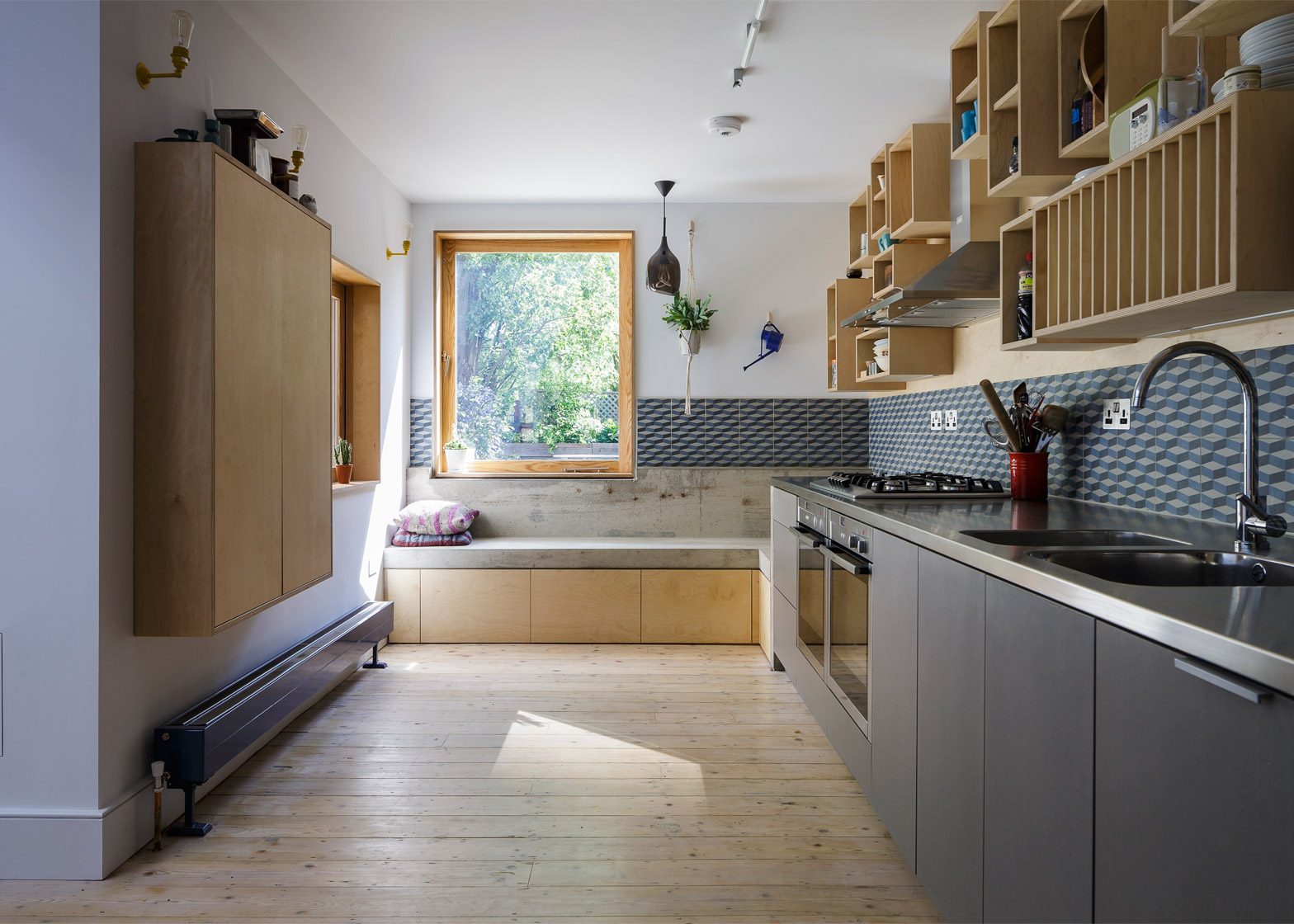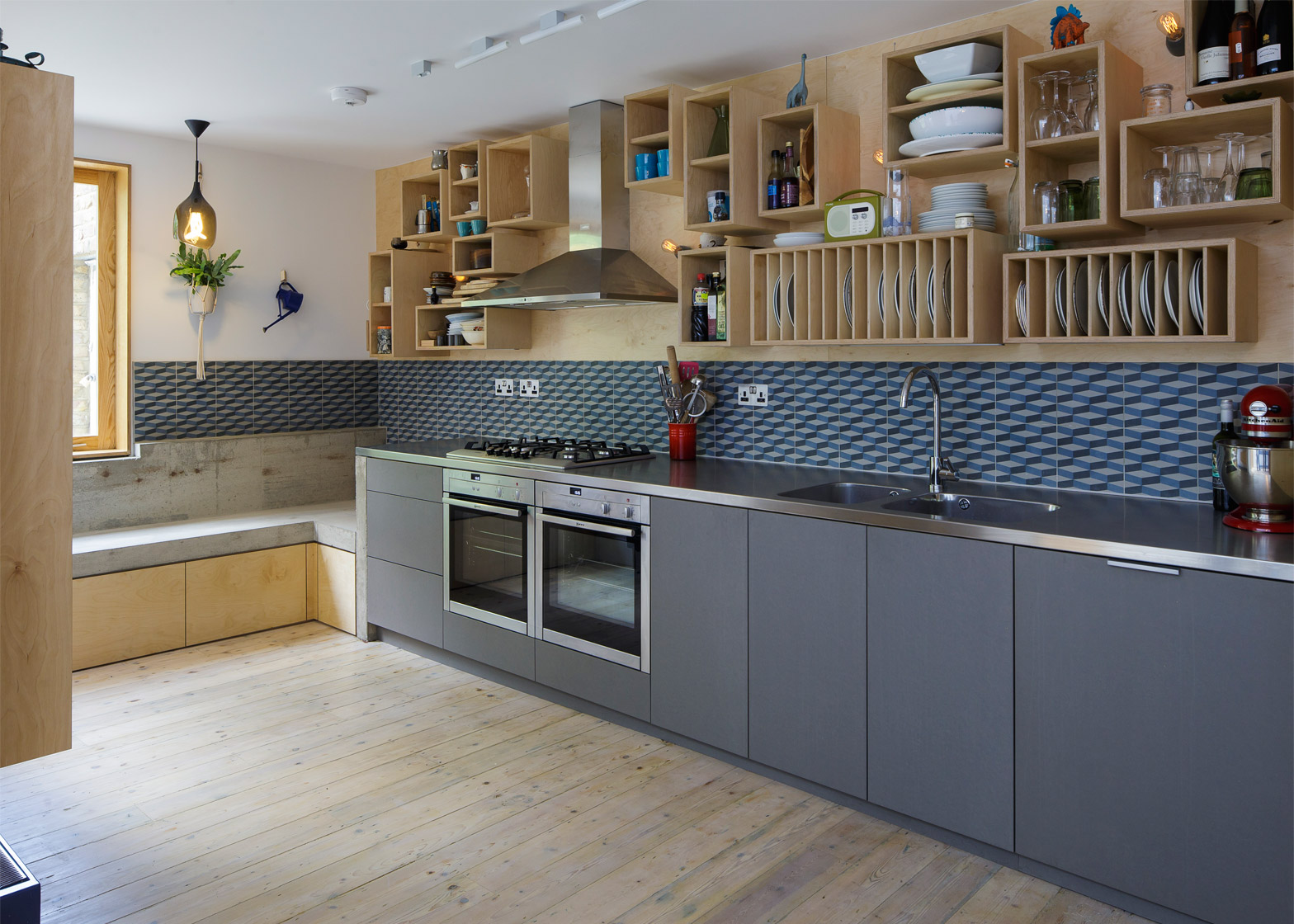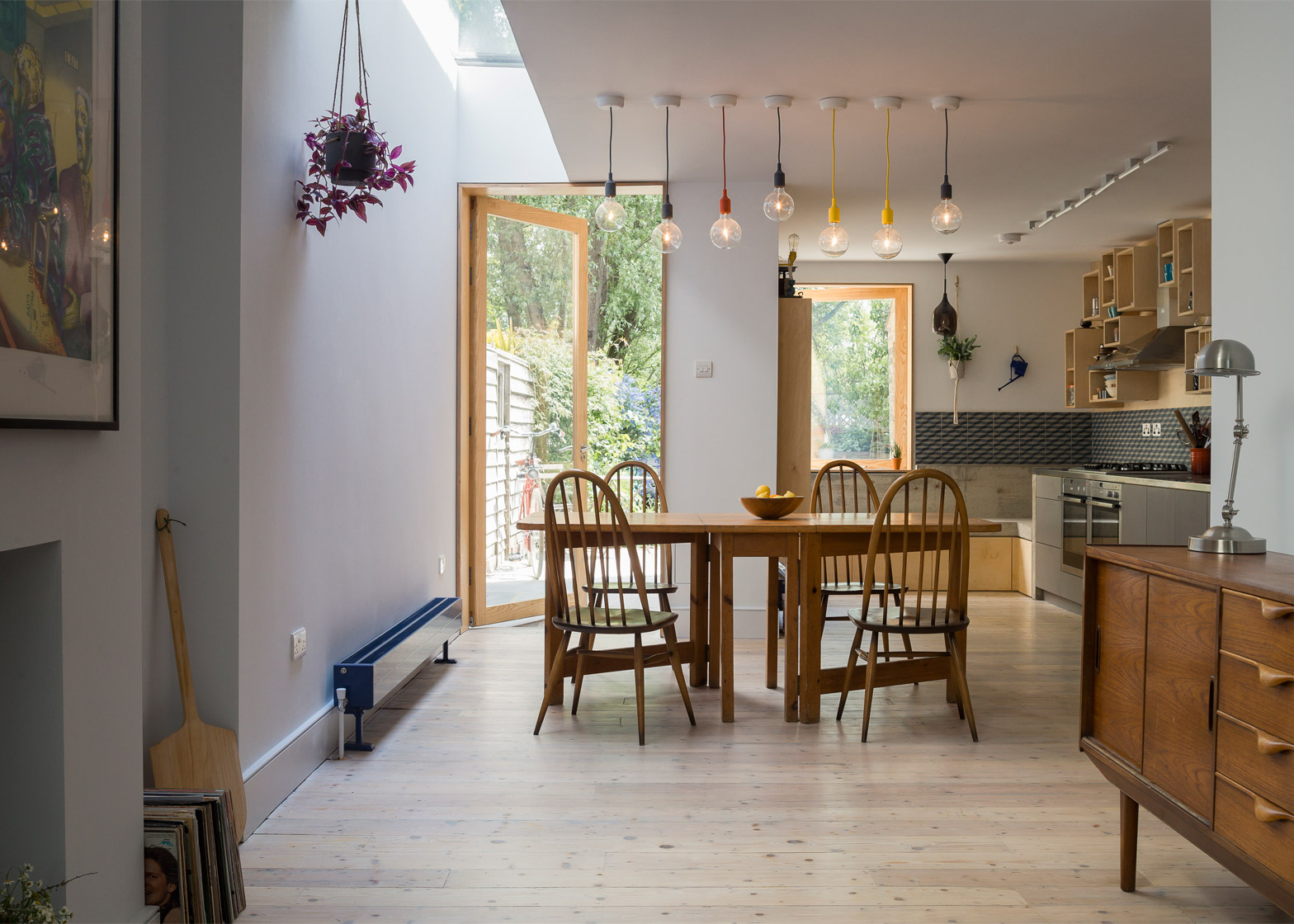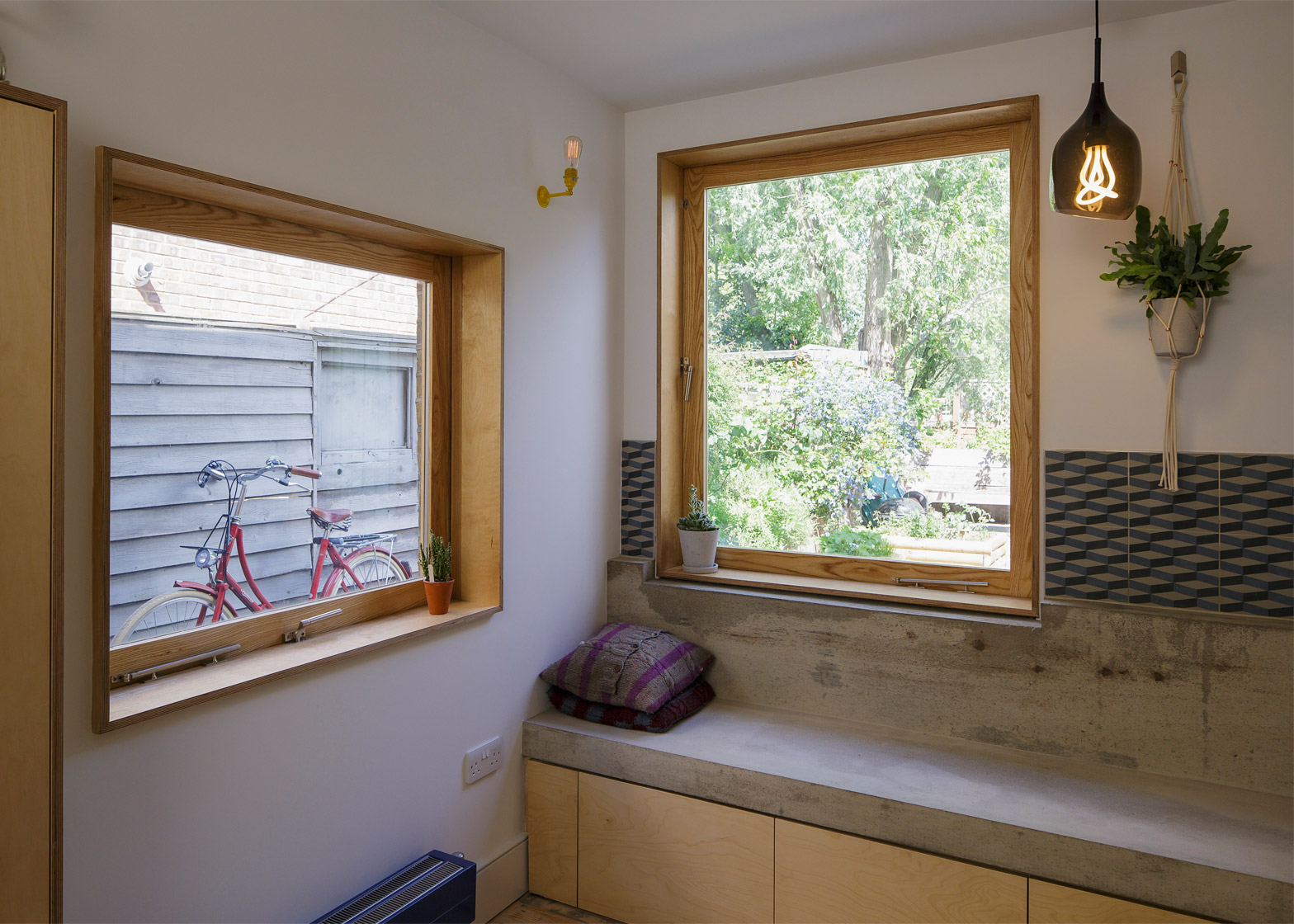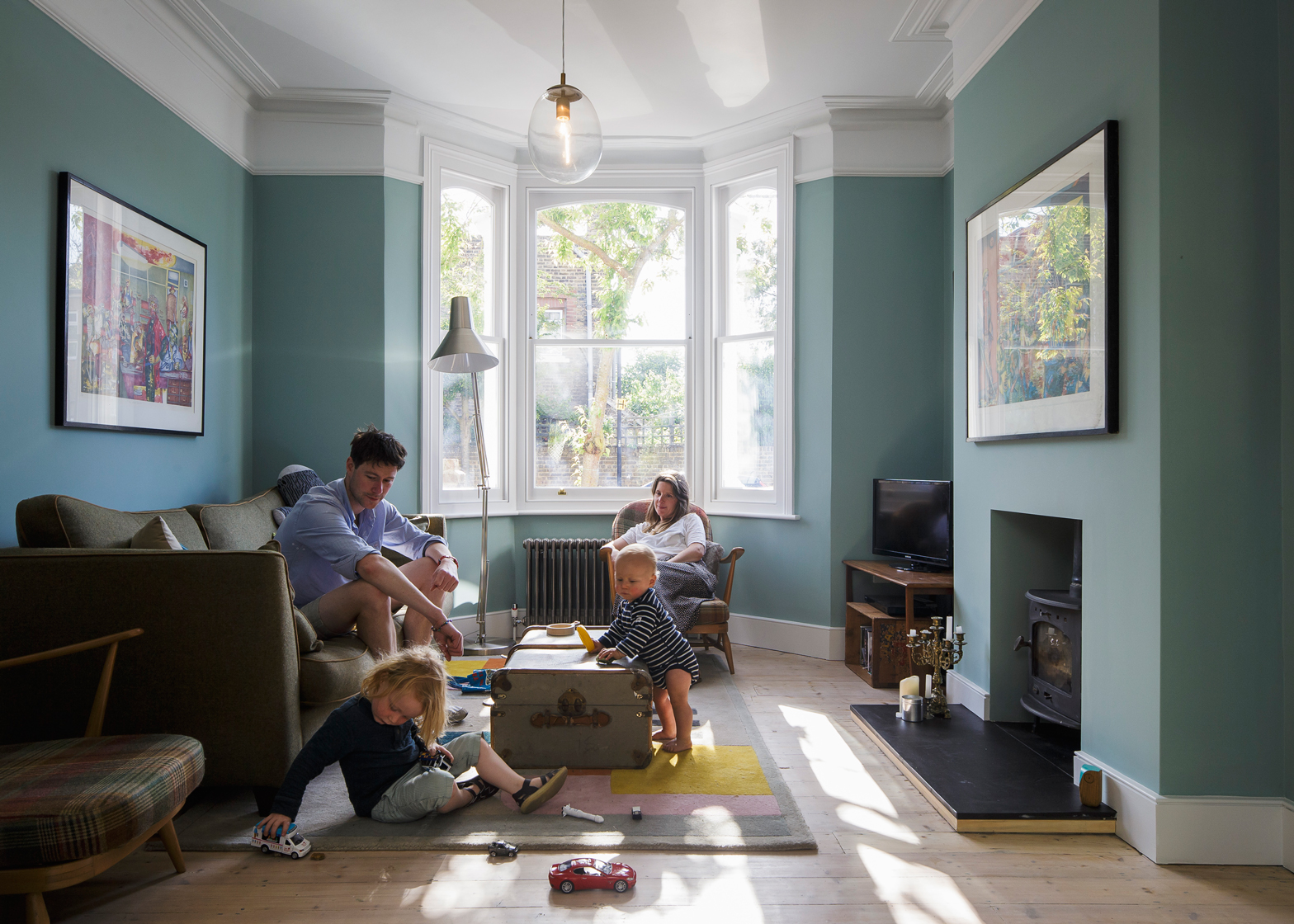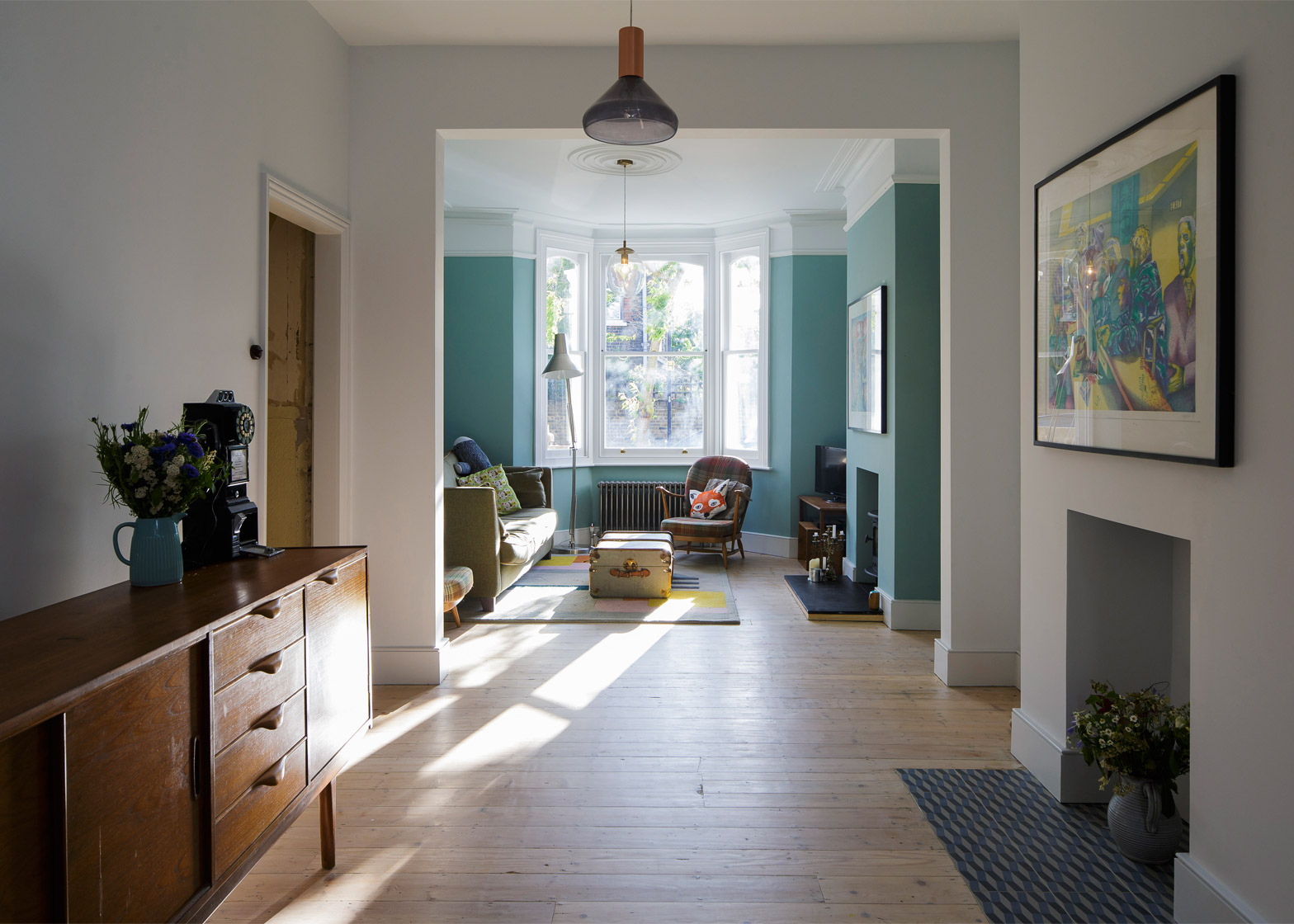A concrete window seat, geometric tiles and a storage wall made of wooden boxes feature inside this east London house that has been renovated and extended by local studio Mustard Architects (+ slideshow).
Named Nook House, the project involved doubling the ground-floor space of the Victorian-era property, but also making it more open plan. The result is four separate but visually connected rooms extending from the street through to the garden.
"The previous layout of the house was enclosed, dark and disconnected between the rooms and from the garden," explained Mustard Architects director Joanna Coleman. "Our clients asked us to redress the situation."
The first step was to extend the rear of the building to create more room. This extension is L-shaped in plan, which helps to naturally divide the space into two zones – a dining area on one side, and a kitchen in the long narrow space opposite.
The rest of the ground floor divides neatly in half. The living room is at the front, framed by the traditional bay window and fireplace, and a study occupies the area between this space and the dining room.
Rather than matching the period features of the existing building, the studio designing contemporary fittings for the extension. These include windows and doors with deep ash frames, as well as an assortment of pendant lamps.
At the rear of the kitchen, a concrete bench runs below the window to create an informal seating bench with storage built into its base.
The seat wraps around a corner to meet the end of the kitchen worktop, which has a stainless steel surface and slate-grey cupboards. Above, wooden boxes in various sizes allow residents to display all of their kitchenware.
"Nooks and crevices permeate and define the extension and refurbishment," said Coleman.
"The kitchen was designed as a gallery for our clients' eclectic cookware collection, in line with their desire to treat the pots, pans, plates and utensils as decoration within the space," she continued.
"The project experiments with materials, combining stainless steel, birch-faced plywood, grey colour MDF, cement tiles and a cast in-situ concrete kitchen bench at critical junctions in the kitchen."
The decorative blue and grey tiles that form a splash-back here reappear in the study, as the ground surface in a former fireplace crevice.
Wooden floorboards unite all four spaces. Walls are mostly painted white, apart from in the living room where a shade of teal was chosen.
Upstairs, the family bathroom was extended and overhauled – it now features fluorescent yellow tiles and green surfaces. Bedrooms on this floor were refurbished too.
Nook House is one of 33 projects shortlisted for Don't Move, Improve 2016 – a competition to find London's best home extensions – alongside an extension that resembles a fox and a copper-clad roof extension.
The entire project was completed to a budget of just £150,000. It also included the addition of insulation to the walls and floors, and triple-glazing, helping to bring the building in line with modern standards.
Photography is by Tim Crocker.

